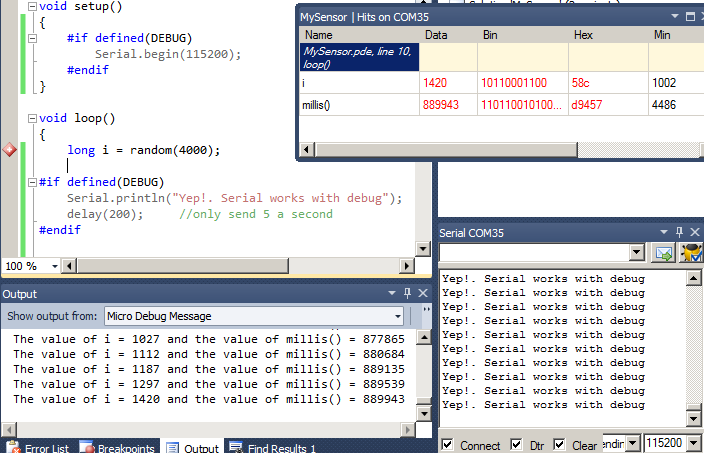Serial.write(27); // ESC command Serial.print('2J'); // clear screen command Serial.write(27); Serial.print('H'); // cursor to home command But it doesn't work. I also found a solution like Serial.println; but that solution (cheat as they called it) will only work on a serial monitor. So is there any possible solution to clear the display. I believe the Arduino IDE does not have full terminal emulation, so you can't clear it (normally you can clear with 'Esc') 2. 5y uno, nano, nodemcu v2. No, the Arduino IDE is fairly limited for debugging. Closest thing to clear screen would probably be printing a bunch of empty spaces/lines lol.
A quick tutorial on how to 'clear' or 'reset' your Arduino. If you've uploaded the 'Blink' program and are now wondering how to reset or clear your Arduino. Johnwasser September 15, 2011, 1:29am #8. In the case of serial flooding: Hold down the Reset button. Unplug the USB cable. Plug in the USB cable. Click on the upload button for the sketch you want to upload. When you see 'Binary sketch size:' in the sketch window, release the Reset button.
Description
Serial.readBytes() reads characters from the serial port into a buffer. The function terminates if the determined length has been read, or it times out (see Serial.setTimeout()).

Serial.readBytes() returns the number of characters placed in the buffer. A 0 means no valid data was found.
Serial.readBytes() inherits from the Stream utility class.
Syntax
Parameters
Arduino Clear Serial Output Buffer

Serial: serial port object. See the list of available serial ports for each board on the Serial main page.buffer: the buffer to store the bytes in. Allowed data types: array of char or byte.length: the number of bytes to read. Allowed data types: int.
Returns
The number of bytes placed in the buffer. Data type: size_t.
Description
Used for communication between the Arduino board and a computer or other devices. All Arduino boards have at least one serial port (also known as a UART or USART), and some have several.
| Board | USB CDC name | Serial pins | Serial1 pins | Serial2 pins | Serial3 pins |
|---|---|---|---|---|---|
Uno, Nano, Mini | 0(RX), 1(TX) | ||||
Mega | 0(RX), 1(TX) | 19(RX), 18(TX) | 17(RX), 16(TX) | 15(RX), 14(TX) | |
Leonardo, Micro, Yún | Serial | 0(RX), 1(TX) | |||
Uno WiFi Rev.2 | Connected to USB | 0(RX), 1(TX) | Connected to NINA | ||
MKR boards | Serial | 13(RX), 14(TX) | |||
Zero | SerialUSB (Native USB Port only) | Connected to Programming Port | 0(RX), 1(TX) | ||
Due | SerialUSB (Native USB Port only) | 0(RX), 1(TX) | 19(RX), 18(TX) | 17(RX), 16(TX) | 15(RX), 14(TX) |
101 | Serial | 0(RX), 1(TX) |
On Uno, Nano, Mini, and Mega, pins 0 and 1 are used for communication with the computer. Connecting anything to these pins can interfere with that communication, including causing failed uploads to the board.
You can use the Arduino environment’s built-in serial monitor to communicate with an Arduino board. Click the serial monitor button in the toolbar and select the same baud rate used in the call to begin().

Serial communication on pins TX/RX uses TTL logic levels (5V or 3.3V depending on the board). Don’t connect these pins directly to an RS232 serial port; they operate at +/- 12V and can damage your Arduino board.


Arduino Clear Serial Monitor
To use these extra serial ports to communicate with your personal computer, you will need an additional USB-to-serial adaptor, as they are not connected to the Mega’s USB-to-serial adaptor. To use them to communicate with an external TTL serial device, connect the TX pin to your device’s RX pin, the RX to your device’s TX pin, and the ground of your Mega to your device’s ground.